Cash or Card? Your 2025 Guide to Managing Money in Southeast Asia
Struggling to manage money in Southeast Asia? This guide has 27 money management tips to help you stretch your travel budget and enjoy your trip stress-free!
Managing money while traveling in Southeast Asia might seem overwhelming at first. Juggling currencies, figuring out when to use cash or cards, and avoiding unnecessary fees can feel like a lot to handle. But don’t worry, I’ve got you covered.
After spending the past few years exploring this amazing region, I’ve picked up plenty of tips (and made some mistakes) to help you stay on top of your finances without losing sleep. With a bit of planning, it’s simpler than you might think.
From indulging in $3 meals at Singapore’s hawker centers to exploring the iconic Batu Caves in Malaysia, I’ll share how to stretch your money, navigate exchange rates, and avoid common money pitfalls while still soaking in the magic of Southeast Asia.
Whether you’re on a backpacker budget or splurging on luxury experiences, this guide will help you handle your money wisely—so you can focus on ticking off that Southeast Asia bucket list!
This blog post is all about how to manage money in Southeast Asia
This post contains affiliate links, including Amazon affiliate links. If you make a purchase through one of these links, I may earn a small commission—at no extra cost to you. As an Amazon Associate, I earn from qualifying purchases. Thank you for your support!
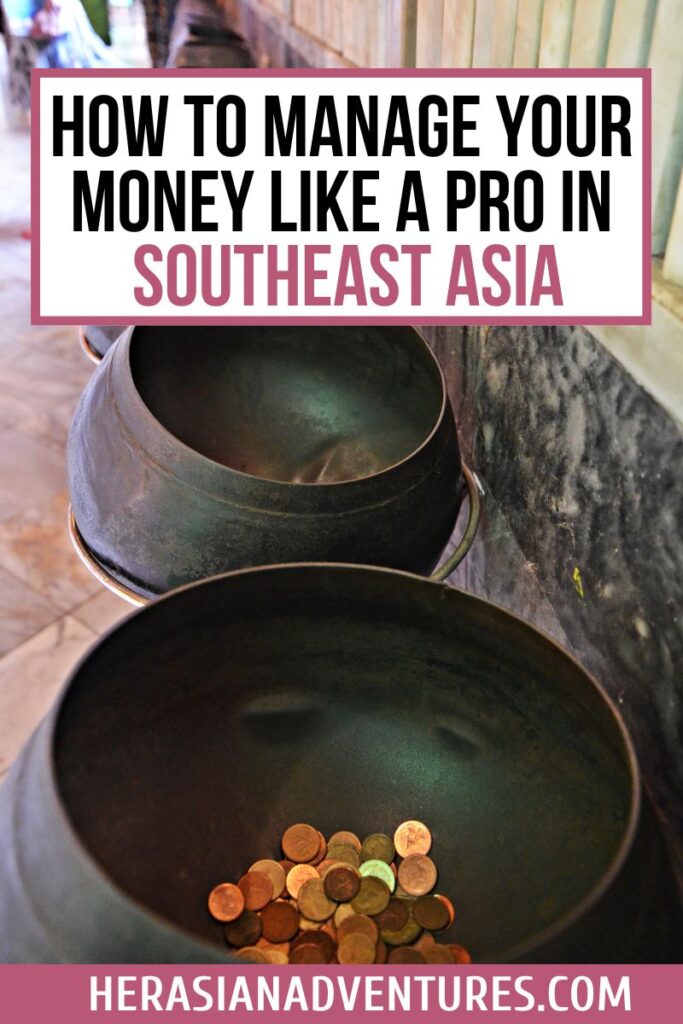
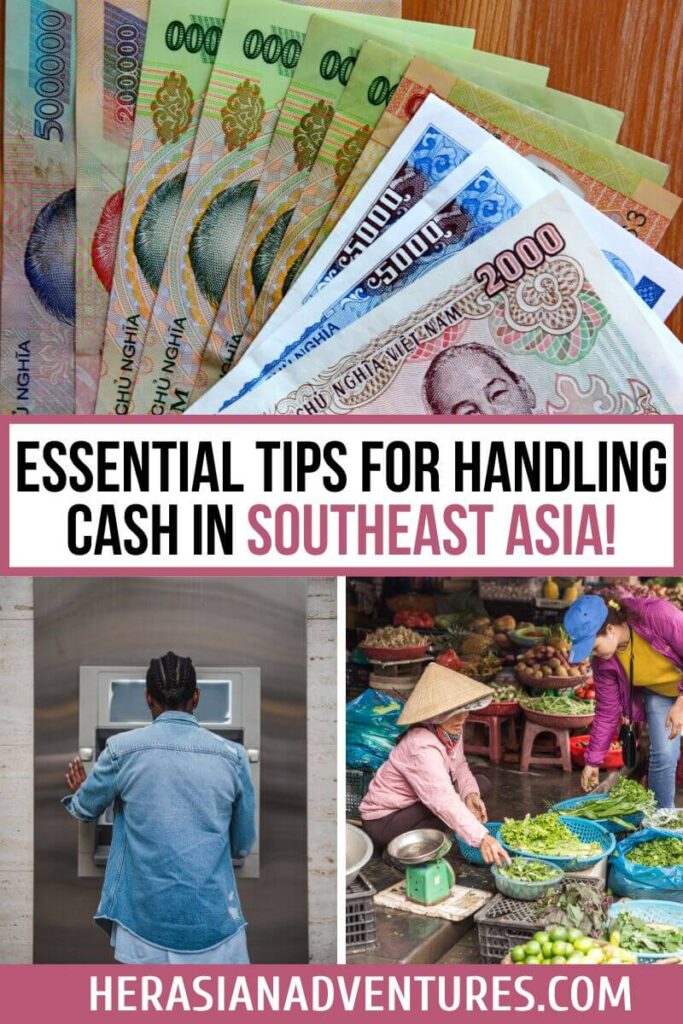
Table of Contents
Practical Guide to Southeast Asia Currencies
When you’re planning to manage money in Southeast Asia, the first thing to know is each country has its own currency. Trust me, getting familiar with exchange rates early will save you from confusion and help stretch your budget.
In Thailand, $1 USD equals about 35 Thai baht—just enough for a tasty street food meal or a quick tuk-tuk ride. But head to Singapore, and that same dollar only gets you 1.35 SGD, where a simple coffee might cost you way more!
Some currencies will make your head spin at first. I remember my first trip to Laos, pulling out over a million kip from the ATM. For a moment, I thought I was rolling in cash, until I realized it was just $50 USD!
Here’s a quick cheat sheet to help you manage money in Southeast Asia—knowing these exchange rates makes budgeting so much easier:
| Country | Currency | 1 USD (approx.) | 1 EUR (approx.) |
| Thailand | Thai Baht (THB) | 34.50 THB | 36.80 THB |
| Vietnam | Vietnamese Dong (VND) | 23,650 VND | 25,350 VND |
| Malaysia | Malaysian Ringgit (MYR) | 4.60 MYR | 4.90 MYR |
| Indonesia | Indonesian Rupiah (IDR) | 15,500 IDR | 16,500 IDR |
| Cambodia | Cambodian Riel (KHR) | 4,070 KHR | 4,350 KHR |
| Laos | Lao Kip (LAK) | 17,600 LAK | 18,800 LAK |
| Myanmar | Myanmar Kyat (MMK) | 2,780 MMK | 2,960 MMK |
| Philippines | Philippine Peso (PHP) | 56.00 PHP | 60.00 PHP |
| Singapore | Singapore Dollar (SGD) | 1.35 SGD | 1.43 SGD |
| Brunei | Brunei Dollar (BND) | 1.35 BND | 1.43 BND |
| Timor-Leste | US Dollar (USD) | 1 USD | 0.93 USD |
Favorite Travel Resources
- Travel Insurance: I always use SafetyWing for longer trips or if you’re already abroad. For shorter stays, Heymondo works well too.
- SIM Card: Stay connected while traveling with an Airalo eSIM—super convenient for fast data access.
- VPN: I use Surfshark to stay safe on public Wi-Fi and unblock my favorite apps.
- Money: I handle payments with Revolut and use Wise for easy money transfers.
- Flights & Transport: Book flights through Skyscanner, buses and trains with 12Go, and rent cars with DiscoverCars.
- Accommodation: I find great options on Booking.com and budget stays through Hostelworld.
- Activities & Tours: I rely on Klook and GetYourGuide for easy-to-book day trips and activities.
What Currency Should You Use In Southeast Asia?
In Southeast Asia, you’ll mostly be paying with the local currency of each country—like Thai baht in Thailand or Vietnamese dong in Vietnam. However, it’s always smart to carry a few US dollars as a backup, especially for emergencies when ATMs aren’t immediately available.
Some countries, like Cambodia, even prefer US dollars for bigger expenses like visas, and they’ll often insist the bills are in perfect condition. To stay ahead of the game, I use iVisa to check visa requirements and apply online before I travel. It saves time and stress!
Did you know? Singapore, one of the richest countries in Southeast Asia, has a high cost of living, while places like Laos and Timor-Leste are much cheaper. In fact, you could rent a villa in Laos for the price of a capsule hotel in Singapore!
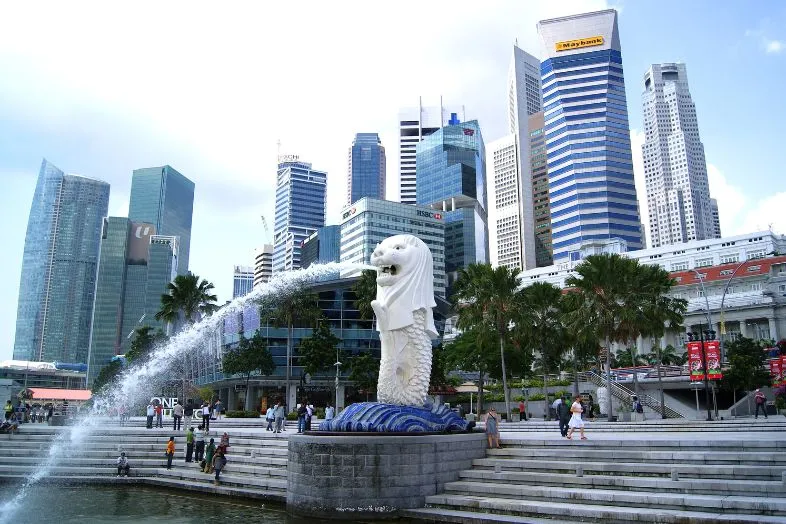
Tips for Getting the Best Currency Exchange Rates
Getting the best exchange rate is key to making your South East Asia travel budget go further. With a few smart tips, you can stretch your money and have more left for those incredible adventures!
- Use ATMs for Better Rates: ATMs are often the easiest and most cost-effective way to withdraw local currency. They tend to offer the best exchange rates, saving you money.
- Check Rates Before You Go: Apps like XE Currency keep you updated on exchange rates, so you’ll know if you’re getting a fair deal when converting your money or making purchases.
- Avoid Street Exchanges: It can be tempting to exchange money on the street, but sticking to official banks or licensed exchange bureaus is safer. This helps you avoid counterfeit bills and shady deals.
Following these Southeast Asia currency exchange tips will help your budget last longer, giving you more to spend on those unforgettable experiences, from exploring stunning temples to island hopping in Koh Phi Phi or trying delicious street food.
Want more free travel apps? Check out this list of 25 Essential Travel Apps to Download Before Your Southeast Asia Trip to help you get the most out of your adventure!
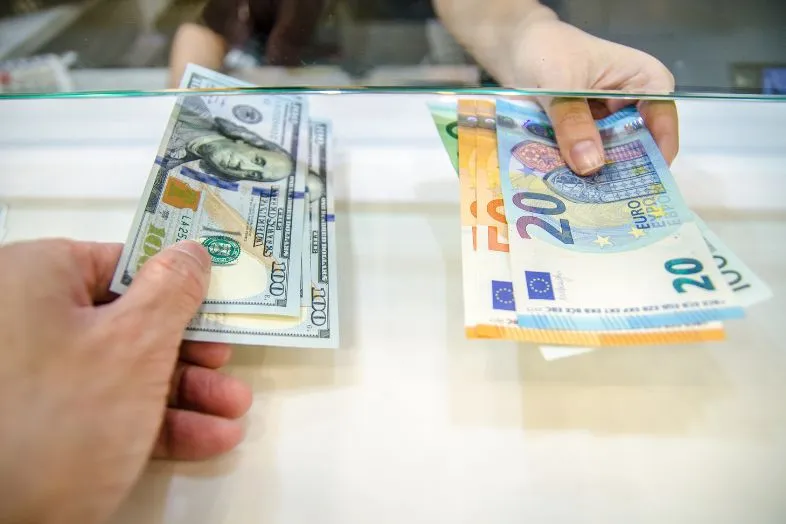
Balancing Cash and Cards in Southeast Asia
When planning your trip to Southeast Asia, you’ll likely wonder: what’s the best way to pay here? The answer really depends on where you are, but let me tell you—cash is your best bet in many places.
In rural areas or local markets, cash is a must. Whether you’re bargaining for souvenirs in Vietnam or hopping on a long-tail boat in Phi Phi Island, you can’t rely on cards. For these experiences, always have cash handy to make life easier.
Now, in bigger cities like Bangkok, Kuala Lumpur, or Ho Chi Minh City, credit and debit cards are much more widely accepted. You’ll find no trouble using your card at restaurants, hotels, or shopping malls. But remember, this is not the case everywhere. Always carry a stash of local currency, just in case.
Is It Better to Use Card or Cash in Southeast Asia?
You’ll want both! For daily expenses like food, transport, or souvenirs, cash works best. For bigger purchases, like hotel stays or tours, a credit card is perfect. Mixing both gives you flexibility without overloading on cash.

Tips for Using Credit Cards in Southeast Asia
Using a credit card in Southeast Asia can make life a whole lot easier—whether you’re booking a hotel, buying souvenirs, or paying for that amazing street food. But it’s not always smooth sailing, and there are a few things you need to keep in mind.
Here are my top tips for managing credit cards and keeping your money safe while traveling Southeast Asia:
- Avoid Foreign Transaction Fees: Choose a travel-friendly card like Revolut or the Wise card, which are some of the best travel card for Asia, to dodge those annoying 3% fees that regular cards charge for international purchases.
- Watch Out for ATM Fees: In countries like Thailand, ATM fees can reach $6! To minimize charges, consider withdrawing larger sums at once instead of multiple small withdrawals.
- Use Secure ATMs: Stick to ATMs that are inside banks or in well-lit areas. If your card gets swallowed, you’ll be in the safest place to sort it out.
- Keep Your PIN Safe: Cover the keypad when you enter your PIN. And, don’t use easily guessable numbers like your birthday or simple patterns!
- Carry a Backup Card: Always bring a second card from a different bank. Store it separately so you’re covered if your main card gets lost or stolen.
- Notify Your Bank: Set up travel alerts to avoid your card being blocked due to “suspicious activity” while you’re abroad.
Following these simple steps will help you manage money in Southeast Asia, so you can focus on the adventure and not on your finances!
Need more safety tips? Check out my full guide on the Must-Have Safety Items For Solo Female Travelers!
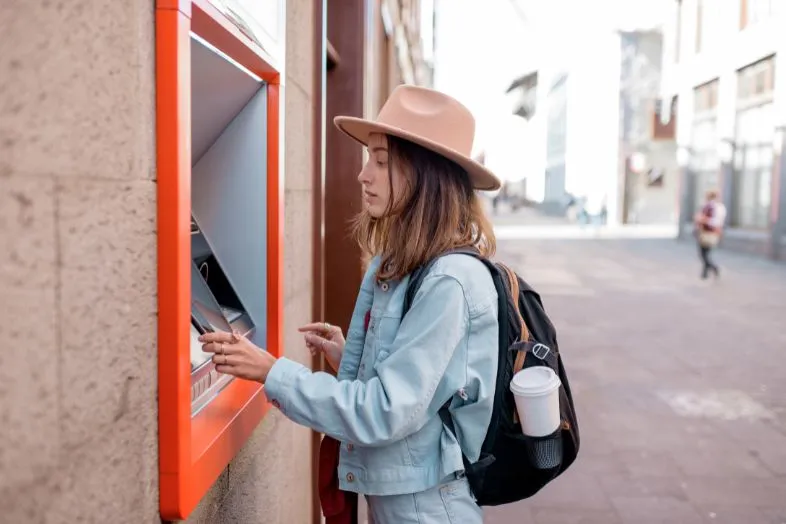
Tips Handling Money Safely While Exploring Southeast Asia
While credit cards are convenient, cash remains king in many parts of Southeast Asia. Always have local currency on hand, especially when exploring off-the-beaten-path destinations. Here’s how to manage money in Southeast Asia safely:
Smart Ways to Store and Carry Cash:
- Lock Up Your Cash: If your hotel has a safe, use it! If not, lock your cash in your suitcase with a small padlock. It’s a simple trick to avoid unnecessary stress.
- Don’t Carry Too Much: Only carry what you need for the day. There’s no reason to tempt fate with a large amount of cash—you’re just asking to be targeted by pickpockets.
- Bring Small Bills: Many vendors, especially in local markets or when taking taxis, may not have change for large bills. Having small denominations makes things smoother and ensures you don’t overpay.
- Bring a Coin Purse: Coins are crucial for street food or local transport. It’s one of those small travel essentials you’ll be glad you packed once you’re bargaining for that snack or ride.
Extra Tips to Stay Safe:
- Use a Money Belt or Decoy Wallet: Okay, it’s not a fashion statement, but it’s smart! Keeping your cash safe with a money belt or decoy wallet can save you from losing everything if you get pickpocketed.
- Always Have Some USD: In places like Cambodia and Laos, USD is widely accepted. It’s a handy backup for emergencies, visa payments, or when local currency is hard to come by.
- Mind Counterfeit Currency: In places like Cambodia, torn or damaged U.S. dollars won’t be accepted. Keep your bills in good condition and inspect them when receiving change.
- Watch Currency Restrictions: Some countries in Southeast Asia limit the amount of cash you can bring in or take out. While this is rarely an issue, it’s a good idea to be aware of the rules before crossing borders.
Should I Take Cash to Southeast Asia?
Definitely! While credit cards work well for bigger expenses, cash is the best option for daily transactions like street food, souvenirs, or tuk-tuk rides. Most vendors prefer cash, so make sure you’ve got it with you!
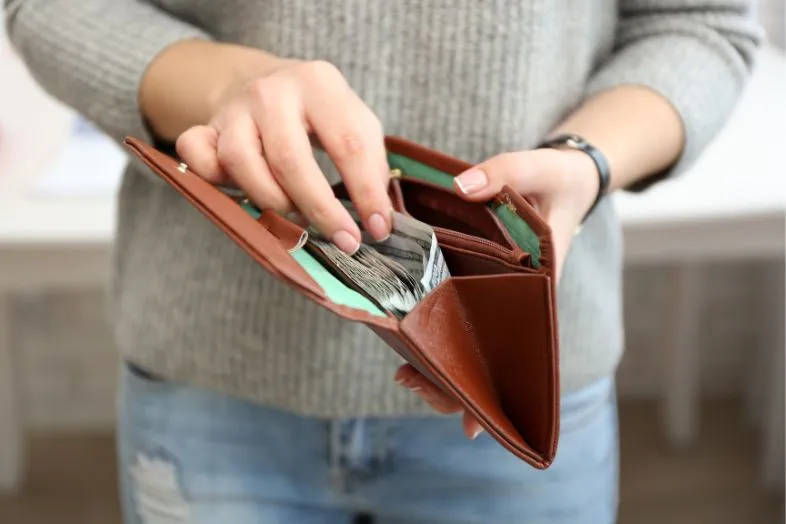
Extra Money-Saving Tips for Southeast Asia Travelers
Managing money in Southeast Asia isn’t just about using the right payment methods; it’s also about smart budgeting and planning for the unexpected. Here are a few tips to stretch your money further while enjoying your travels!
- Create a Daily Budget: Even though Southeast Asia is budget-friendly, small costs can add up quickly. Set a daily limit for food, transport, and activities, and use an app like Trabee Pocket to track your spending. Also, leave room for a little splurge every now and then!
- Plan for Emergencies: Life happens, and things don’t always go as planned. Set aside some emergency cash for unexpected situations like medical costs or a last-minute flight home. You’ll feel more at ease knowing you’re prepared.
- Get Travel Insurance: It might seem like an extra expense, but trust me, travel insurance is worth it. It covers trip cancellations, medical emergencies, and lost luggage—giving you peace of mind to focus on your adventure.
- Tipping in Southeast Asia: Tipping isn’t mandatory, but it’s definitely appreciated. Keep small bills handy for tips in restaurants, taxis, or when you want to show your appreciation to drivers and guides.
- Avoid Scams: Keep an eye out for deals that seem too good to be true. If something feels off, trust your instincts and don’t feel pressured to make quick decisions. Researching beforehand can save you headaches later.
- Copy Locals: Watch how locals handle their money. It’s common to use both hands when giving or receiving money, and it’s respectful. Also, avoid using your left hand, as it’s considered impolite in many cultures here.
Haggling is a big part of Southeast Asia’s market culture, and vendors expect it, so don’t be shy! If you want to master the art of bargaining, check out my full guide on how to haggle when traveling abroad.
Traveling to Southeast Asia? Don’t Forget Travel Insurance!
Whether it’s a missed flight, a case of Bali belly, or a scooter accident, things can turn upside down quickly in Southeast Asia. That’s why I never travel without insurance—and you shouldn’t either.
Here are two options I personally trust and use:
- Heymondo – Perfect for short trips. It covers medical emergencies, trip delays, and lost luggage, with a super handy app and 24/7 support.
- SafetyWing – My go-to for long-term stays or digital nomad life. Affordable, flexible, and covering 170+ countries. Works even if you’re already abroad.
Don’t risk it—get covered before your adventure begins!

Planning Your Southeast Asia Budget
Southeast Asia is easily one of the most affordable regions to travel through. But how much you’ll need to save for a backpacking adventure really depends on where you’re going and your travel preferences.
Whether you’re on a tight budget or looking to splurge a little, let’s break down how to manage your money while exploring this incredible part of the world.
Daily Budget Breakdown for Southeast Asia by Country
Your daily expenses can vary greatly depending on which country you’re in. Some destinations are more budget-friendly than others. Here’s a general idea of how much you can expect to spend per day in Southeast Asia:
- Thailand: $25–$45/day
- Vietnam: $20–$35/day
- Indonesia: $25–$45/day
- Cambodia: $20–$30/day
- Malaysia: $30–$50/day
- Laos: $15–$30/day
- Philippines: $30–$50/day
- Singapore: $50–$100/day
- Brunei: $50–$100/day
Pro Tip: When I travel through Southeast Asia, I always use Skyscanner for flights, 12Go Asia for buses and ferries, and DiscoverCars for car rentals. It’s a simple way to save money and stay stress-free on the road!

How Much Money Do You Need for 3 Months in Southeast Asia?
Planning to backpack through Southeast Asia for three months? Again, your budget will vary based on your travel style and the countries you’re visiting. Here’s an idea of how much you’ll need:
- Luxury Travelers: If you’re after luxury hotels, guided tours, and dining at upscale restaurants, plan to spend $6,000–$9,000 USD for three months, with a monthly budget of $2,000–$3,000 USD.
- Mid-Range Travelers: Expect to spend around $4,500–$6,000 USD for three months. This will include staying in guesthouses or budget hotels, enjoying local restaurants, and occasionally doing a few tours. Your monthly expenses will range between $1,500 and $2,000.
- Budget Travelers: Around $3,000–$4,500 USD for three months. You’ll stay in hostels, stick to street food, and rely on public transportation, keeping your monthly expenses between $1,000 and $1,500 USD.
If you’re planning your own Southeast Asia trip, check out Booking.com and Hostelworld for great hotel and hostel deals. For tours and activities, I always turn to GetYourGuide and Klook—they’re super reliable and make booking your experiences so easy!
How Much Cash Should You Carry in Southeast Asia?
It all depends on where you’re going! In cities, $20–$50 USD in local currency per day should be enough since you can use cards for bigger expenses. In more rural areas, carry $50–$100 USD to cover a few days of expenses.

FAQs About Managing Money in Southeast Asia
To wrap things up, let’s answer some of the most common questions travelers have about handling money while traveling Southeast Asia.
Southeast Asia is made up of diverse countries, each with its own currency. For instance, Thailand uses the Thai Baht, Vietnam uses the Vietnamese Dong, and Singapore uses the Singapore Dollar. It’s a good idea to carry the local currency, but U.S. dollars are also accepted in some places like Cambodia and Laos.
The best way to pay in Southeast Asia is with a mix of cash and cards. Cash is essential for local markets, street food, and rural areas, while cards work well in larger cities, for hotels, and bigger purchases. Always keep local currency on hand to avoid issues with smaller vendors.
It’s a good idea to carry both cash and cards in Southeast Asia. Cash is best for day-to-day expenses like transport and food, especially in remote areas. Cards are useful in cities for larger purchases, but always have some cash to avoid problems with places that don’t accept cards.
For Southeast Asia, the best travel cards are those with no foreign transaction fees. Cards like Revolut and Wise offer great exchange rates and low fees. Visa and Mastercard are widely accepted, making them a solid choice for everyday spending and emergency use while traveling around the region.
To safely manage money in Southeast Asia, use a mix of cash and cards, and keep your cash in multiple places. Use ATMs in secure locations to avoid fees and potential scams. A money belt or hidden pouch helps protect your cash, and it’s always wise to monitor your account regularly.
Final Thoughts: Making the Most of Your Money in Southeast Asia
I hope this guide has helped you feel more confident about managing your money while traveling Southeast Asia. It doesn’t have to be overwhelming! By balancing cash and cards, planning ahead, and sticking to these travel money tips, you’ll be set to enjoy your adventure stress-free.
If you’re excited about visiting Southeast Asia but unsure where to start, check out my guides on the best fall destinations in Asia or top places to visit in Asia during winter. Many of these Southeast Asian countries are on the list!
Got any extra tips or questions about how to manage money while traveling Southeast Asia? Leave a comment below—I’d love to hear your thoughts and help with any travel planning!

Other Travel Guides You Might Enjoy:
- Ultimate Guide to Local SIM Cards: Stay Connected While Traveling Anywhere!
- 13 Beach Bag Essentials Every Solo Female Traveler Needs!
- 12 Creative Ways to Make Your Luggage Stand Out at the Airport!
- Struggling to Capture Solo Travel Photos? Check Out These 12 Tips
- 15 Genius Beach Hacks Every Solo Female Traveler Should Know!
- 25 Exciting Summer Bucket List Ideas to Make the Most of the Season!
Liked This Southeast Asia Money Guide? Pin It on Pinterest!
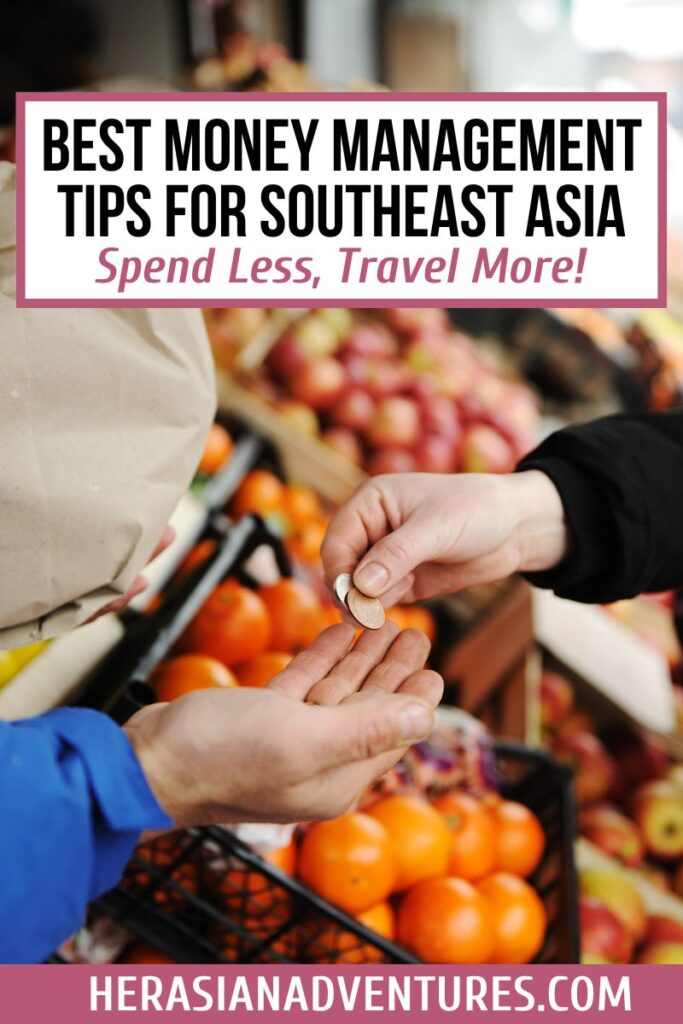
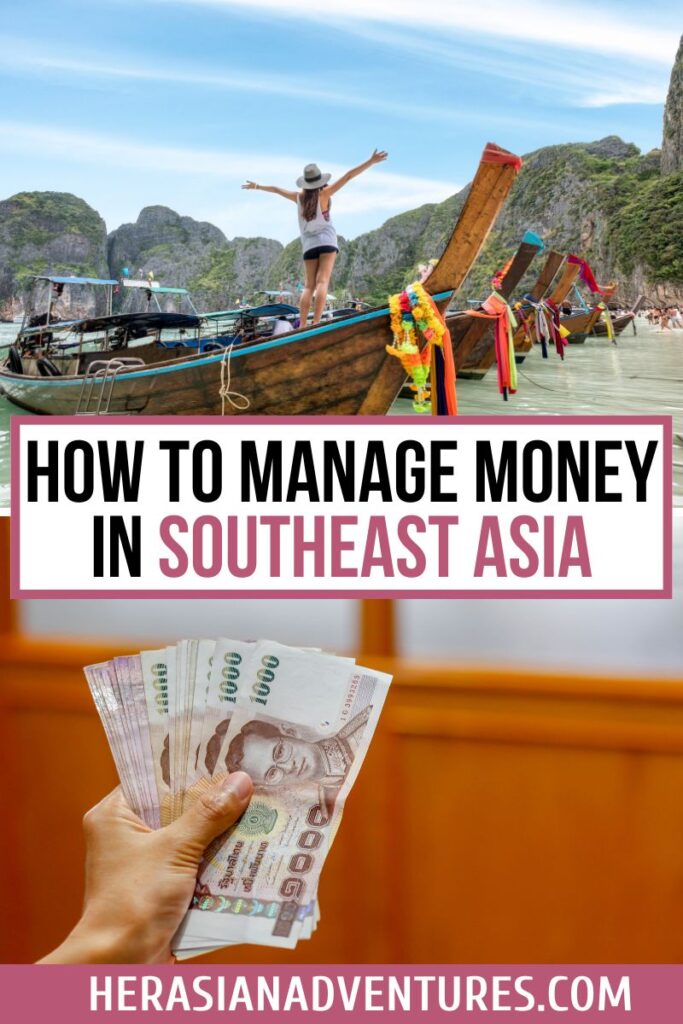

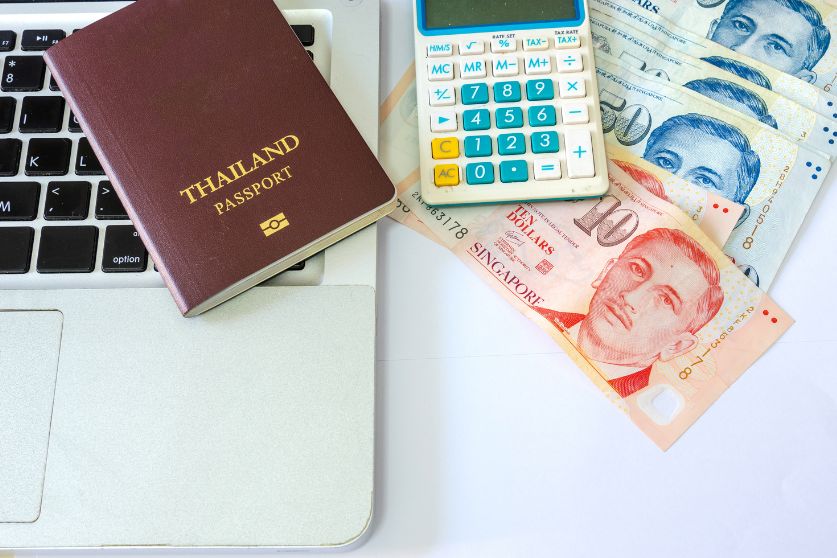







That is interesting how cash is king cause Australia is doing away with cash and wanting people to tap. Thanks for the tips.
I’ve not been to any of these countries for years, but when I last visited, prices were so reasonable we just took cash. Thank you for the detailed guide, I have pinned it and will definitely consult it if and when I return once I get over my Japan obsession.
Great tips, I love using cash but definitely important not to carry too much around. I pretty much keep everything in my hotel room except my daily budget, then have my credit card on me in case I need more.
Oh this post is so helpful! Those ATM charges in Thailand are such a killer! Wish I’d known earlier.
Hiii! Great tips, thanks for sharing! 😊 Here’s another travel tip to save money: The “ATM Fee Saver” app– the travel app helps you find ATMs with no or low fees for withdrawing money. It also locates Forex and exchange spots. I use it on every trip and it saved me tones of money!